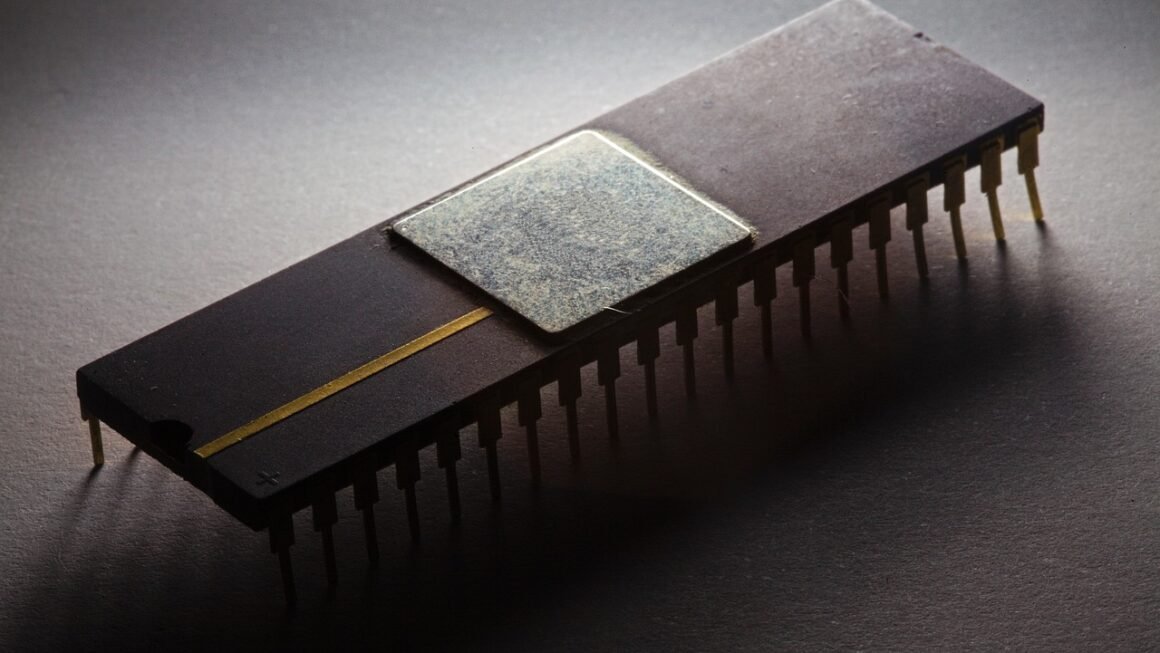Imagine a world where medicine targets diseases at the cellular level, materials are stronger and lighter than ever before, and electronics are incredibly fast and efficient. This isn’t science fiction; it’s the promise of nanotechnology, a field rapidly transforming industries and our understanding of the fundamental building blocks of matter.
What is Nanotechnology?
Nanotechnology, at its core, is the manipulation of matter at the atomic and molecular scale. We’re talking about working with materials and devices that are measured in nanometers – one nanometer is one billionth of a meter, or about 1/80,000th the width of a human hair! This tiny scale allows scientists and engineers to create materials and devices with entirely new properties and functionalities.
Defining the Nanoscale
- The nanoscale generally refers to structures with dimensions between 1 and 100 nanometers.
- At this scale, materials exhibit unique physical, chemical, and biological properties that differ significantly from their bulk counterparts.
- For example, gold nanoparticles can be red or purple, while bulk gold is yellow. This is because the interaction of light with matter changes dramatically at the nanoscale.
Key Concepts in Nanotechnology
- Self-assembly: The ability of molecules and nanostructures to spontaneously organize into ordered structures. This is crucial for creating complex nanoscale devices.
- Quantum effects: At the nanoscale, quantum mechanical effects become significant, influencing the behavior of electrons and other particles. This allows for the creation of novel electronic devices.
- Surface area to volume ratio: As the size of a material decreases, its surface area to volume ratio increases dramatically. This has a profound impact on chemical reactivity and other properties.
- Actionable Takeaway: Understand the scale of nanotechnology and how it unlocks unique material properties.
Applications of Nanotechnology Across Industries
Nanotechnology is already making a significant impact on various industries, and its potential for future applications is immense. From medicine to energy to electronics, the possibilities seem endless.
Nanomedicine: Revolutionizing Healthcare
- Targeted Drug Delivery: Nanoparticles can be designed to deliver drugs directly to cancer cells, reducing side effects and improving treatment efficacy. For example, liposomes (tiny, spherical vesicles) can encapsulate chemotherapy drugs and release them specifically at the tumor site.
- Diagnostics and Imaging: Nanotechnology enables the development of highly sensitive diagnostic tools that can detect diseases at an early stage. Quantum dots, for instance, are used as fluorescent markers for imaging cells and tissues.
- Regenerative Medicine: Nanomaterials can be used as scaffolds to support tissue growth and regeneration. Nanofibers can mimic the structure of the extracellular matrix, promoting cell adhesion and proliferation.
- Example: Researchers are exploring the use of gold nanoparticles to deliver gene therapies directly into cells, potentially curing genetic diseases.
Energy: Sustainable Solutions
- Solar Cells: Nanomaterials can enhance the efficiency of solar cells by improving light absorption and conversion. Nanowires, quantum dots, and graphene are all being explored for their potential in solar energy.
- Batteries: Nanotechnology can increase the energy density and charging speed of batteries. Nanomaterials like carbon nanotubes and graphene can improve the conductivity and stability of battery electrodes.
- Fuel Cells: Nanocatalysts can enhance the efficiency of fuel cells by accelerating chemical reactions. Platinum nanoparticles are commonly used as catalysts in fuel cells.
- Example: Nanomaterials are being used to develop lighter and more efficient batteries for electric vehicles.
Electronics: Faster and Smaller Devices
- Transistors: Nanotechnology enables the creation of smaller and faster transistors, the building blocks of computers and other electronic devices. Carbon nanotubes and graphene are promising materials for next-generation transistors.
- Memory Storage: Nanomaterials can increase the storage capacity of memory devices. Nanowires and quantum dots can be used to store data at incredibly high densities.
- Displays: Nanotechnology is used in the development of brighter and more energy-efficient displays. Quantum dots are used in QLED TVs to produce vibrant colors.
- Example: Researchers are working on creating flexible and transparent electronics using nanomaterials, paving the way for foldable smartphones and wearable devices.
Other Applications
- Environmental Remediation: Nanomaterials can be used to clean up pollutants from water and air.
- Textiles: Nanotechnology can create stain-resistant, wrinkle-free, and antimicrobial fabrics.
- Cosmetics: Nanoparticles are used in sunscreens and other cosmetic products to improve their performance.
- Actionable Takeaway: Explore the potential applications of nanotechnology in your specific industry and identify opportunities for innovation.
Benefits of Nanotechnology
The allure of nanotechnology stems from its remarkable potential to enhance existing technologies and create entirely new ones. This translates into numerous benefits across various sectors.
Enhanced Material Properties
- Increased Strength and Durability: Nanomaterials can be significantly stronger and more durable than their bulk counterparts.
- Improved Conductivity: Nanomaterials can exhibit enhanced electrical and thermal conductivity.
- Lightweight: Nanomaterials can be used to create lightweight materials without sacrificing strength.
- Increased Surface Area: High surface area to volume ratio allows for increased chemical reactivity and absorption capabilities.
Improved Device Performance
- Faster Processing Speeds: Nanoscale transistors enable faster processing speeds in electronic devices.
- Higher Energy Efficiency: Nanomaterials can improve the energy efficiency of solar cells, batteries, and other energy devices.
- Greater Sensitivity: Nanoscale sensors can detect even trace amounts of substances.
Advancements in Healthcare
- More Effective Treatments: Targeted drug delivery and regenerative medicine offer the potential for more effective treatments for diseases.
- Earlier Diagnosis: Nanotechnology-based diagnostic tools can detect diseases at an earlier stage.
- Personalized Medicine: Nanotechnology can enable personalized medicine tailored to an individual’s genetic makeup.
Environmental Benefits
- Pollution Remediation: Nanomaterials can be used to clean up pollutants from water and air.
- Sustainable Energy: Nanotechnology can contribute to the development of sustainable energy sources.
- Resource Efficiency: Nanotechnology can reduce the consumption of resources by creating more durable and efficient materials.
- Actionable Takeaway: Consider the multifaceted benefits of nanotechnology when evaluating its potential for your project or business.
Challenges and Future Directions
Despite its immense potential, nanotechnology also faces challenges that need to be addressed to fully realize its benefits.
Safety and Environmental Concerns
- Toxicity: The potential toxicity of nanomaterials is a major concern. More research is needed to understand the long-term effects of nanomaterials on human health and the environment.
- Environmental Impact: The release of nanomaterials into the environment could have unforeseen consequences.
- Regulation: The lack of clear regulations for nanomaterials makes it difficult to ensure their safe and responsible use.
Ethical Considerations
- Accessibility: Ensuring equitable access to nanotechnology-based products and services is crucial.
- Privacy: Nanotechnology-based sensors could be used to collect personal data without consent.
- Societal Impact: The widespread adoption of nanotechnology could have significant societal implications that need to be carefully considered.
Overcoming the Challenges
- Research and Development: Continued research and development is essential to understand the properties and potential risks of nanomaterials.
- Regulation and Standards: Clear regulations and standards are needed to ensure the safe and responsible use of nanotechnology.
- Public Engagement: Engaging the public in discussions about the ethical and societal implications of nanotechnology is crucial.
Future Directions
- Advanced Materials: Development of stronger, lighter, and more functional materials for various applications.
- Bio-integrated Devices: Creating devices that can seamlessly integrate with biological systems for monitoring and treatment purposes.
- Quantum Computing: Utilizing nanotechnology to build quantum computers that can solve complex problems beyond the capabilities of classical computers.
- Personalized Manufacturing: Using nanotechnology for customized manufacturing of products tailored to individual needs.
- Actionable Takeaway: Stay informed about the challenges and ethical considerations surrounding nanotechnology and support responsible development and regulation.
Conclusion
Nanotechnology stands as a pivotal technological frontier, offering transformative potential across diverse industries. From revolutionizing medicine to creating sustainable energy solutions and enabling faster electronics, its applications are vast and impactful. While challenges remain in terms of safety, environmental impact, and ethical considerations, ongoing research, responsible regulation, and public engagement are crucial for unlocking its full potential. As we continue to explore and understand the nanoscale, nanotechnology promises to reshape our world in profound and positive ways.



